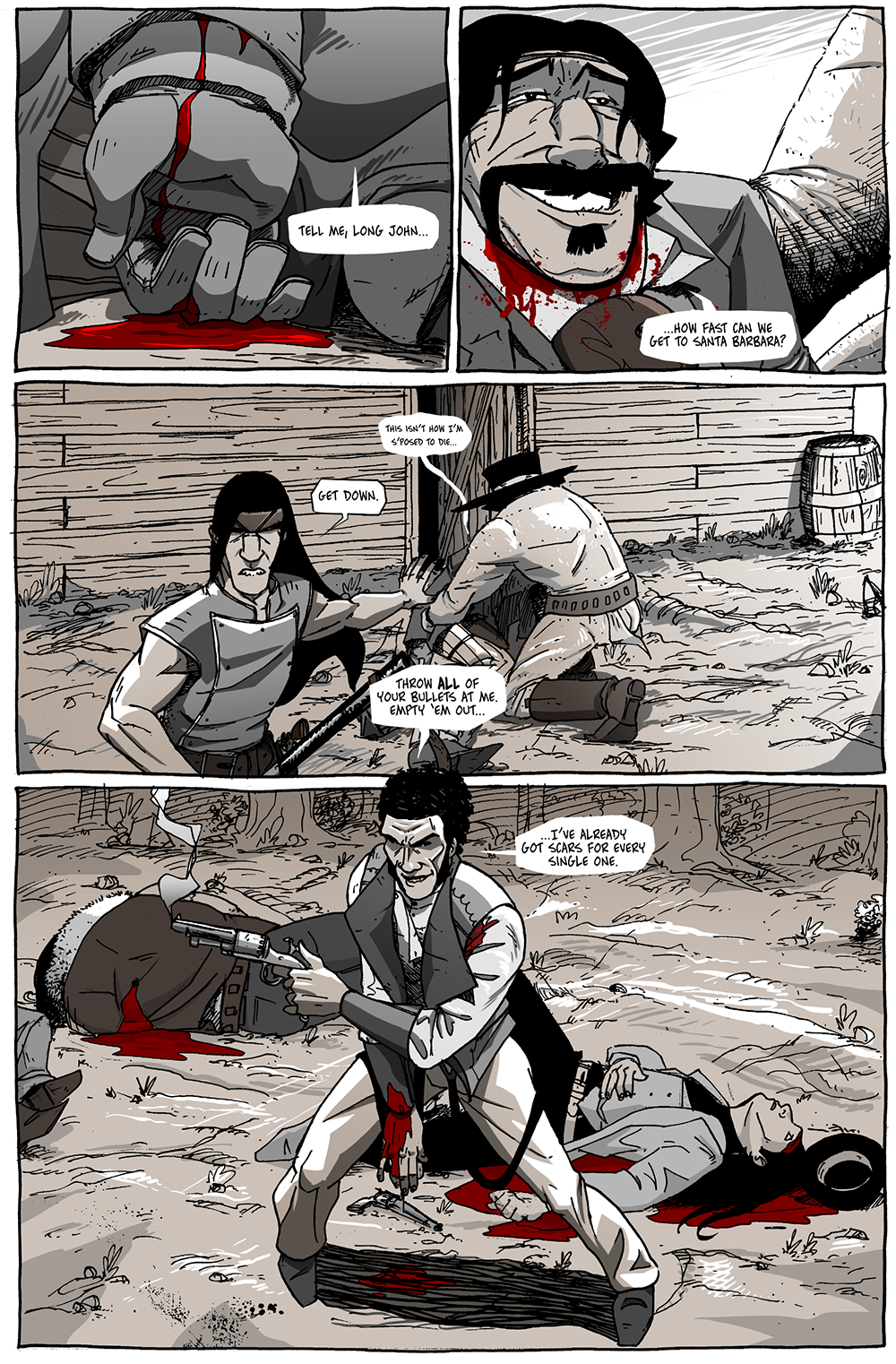The people in Long John are not good people; however, they’re not bad people, either. It’s a world where everyone has done good things and everyone has done bad things. Everybody is broken in their unique way, and I want the admirable qualities––as well as the qualities one doesn’t brag about––to surface for every major character.
Bishop may be an antagonist, but he’s not a villain. One thing I wanted to get across with him is that he has survived a lot up until this point and that if there’s any adjective that could be applied to him, it would be “grit.” Juan John may be on death’s door here, but he also, apparently, tried to kill Long John. That doesn’t make his violent death any less emotional.
What I like about this––as the storyteller––is that every heroic moment can be tainted with a bit of skepticism and every villainous act can have a valid argument behind it. It also makes, for the purposes of this chapter, every act of violence painful, damaging, and hard to celebrate for the reader.
To an extent, I want to create a series of characters in Long John that I could find some way to admire as well as admonish. Such a goal is a requirement for believable stories and characters, but it also amplifies how difficult a struggle it will be for Long John to actually change from what he used to be into something better. When stories are framed with clearly defined morality structures, it’s easy to make someone a hero––fight all the bad guys.
But when, if you step back as an objective observer, both sides of a fight are equally “good” and “bad,” then the path gets dirt kicked over it and you have to feel your way through the bramble, which, for me, is a much more interesting journey to watch.



Discussion ¬